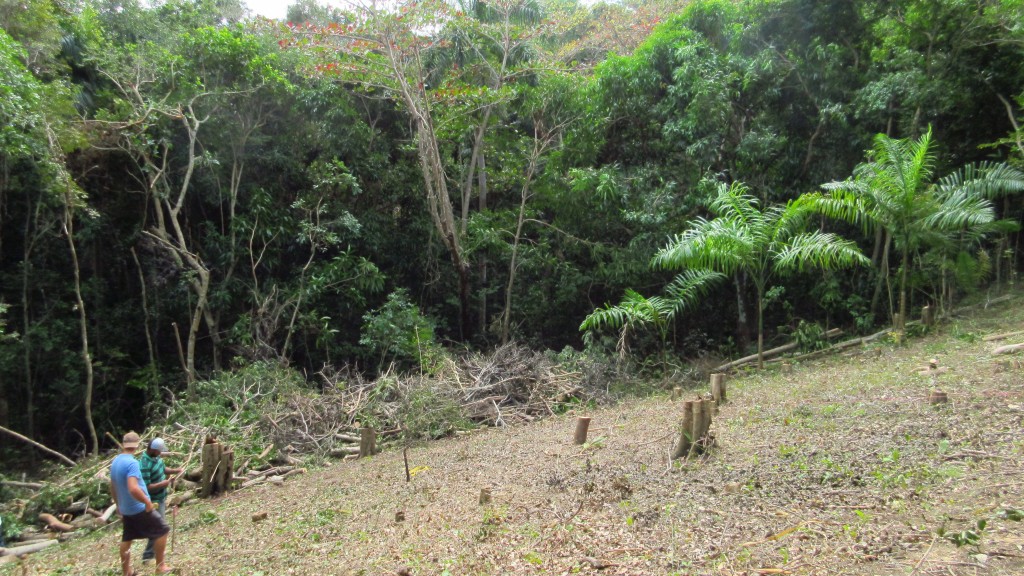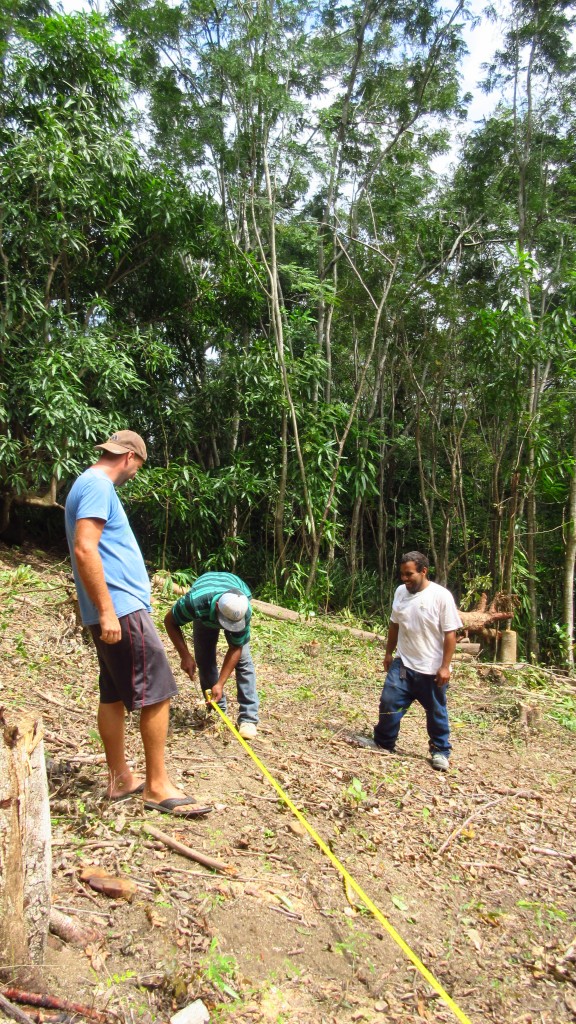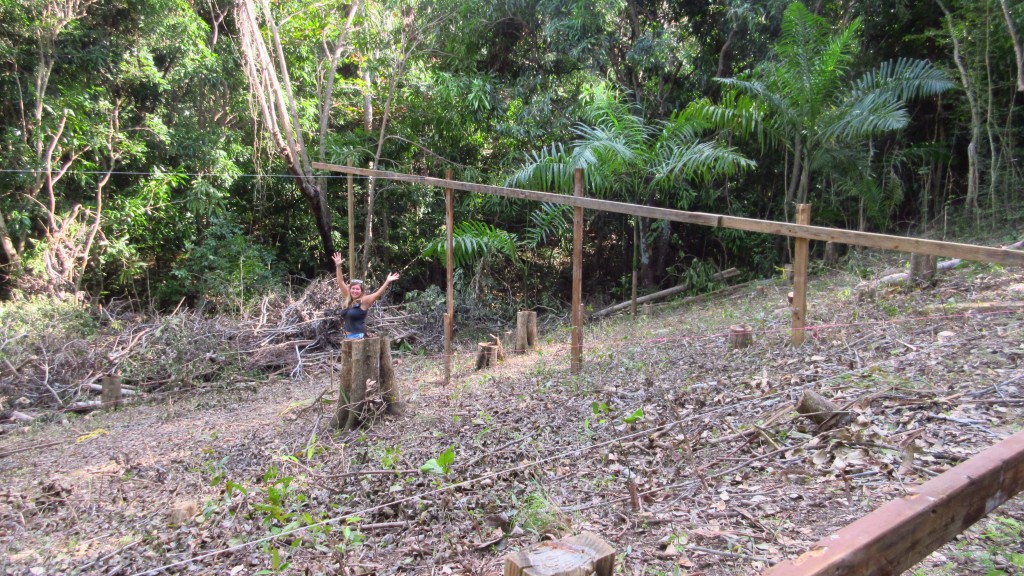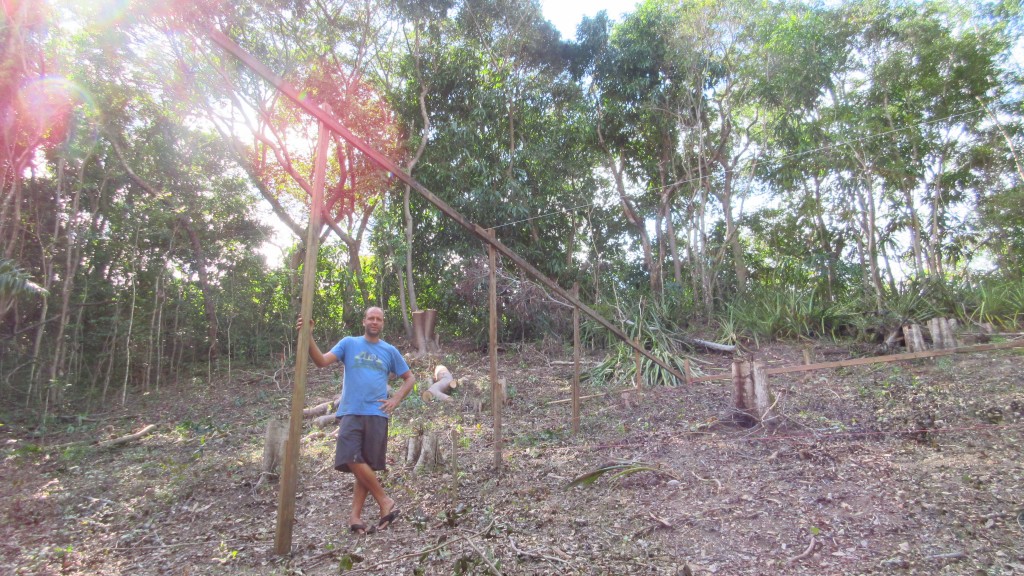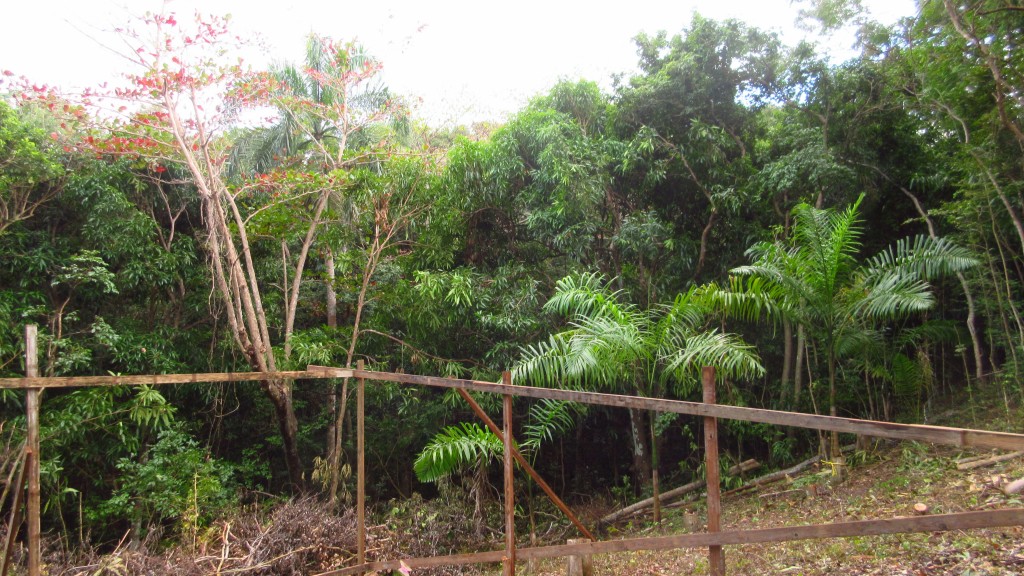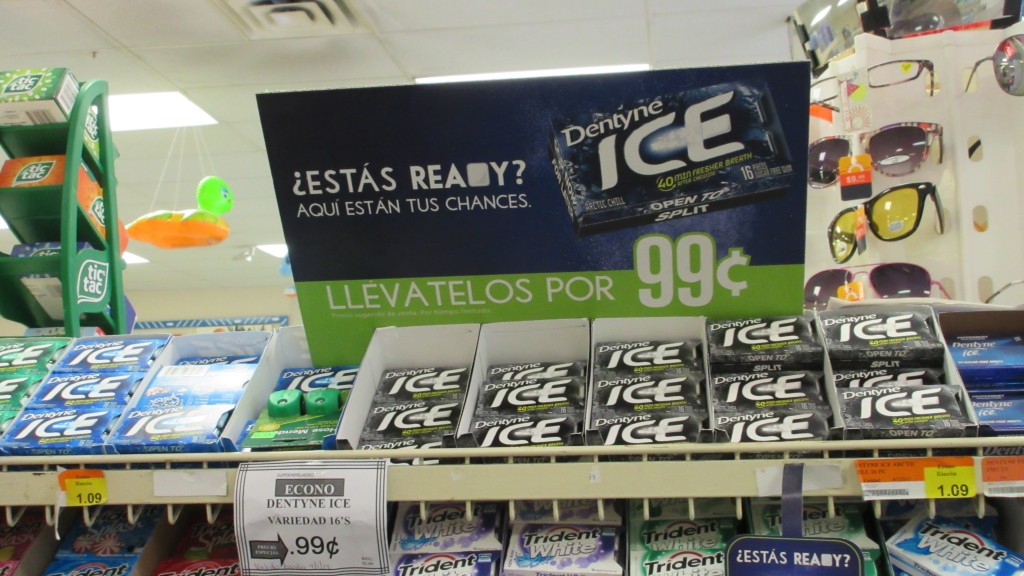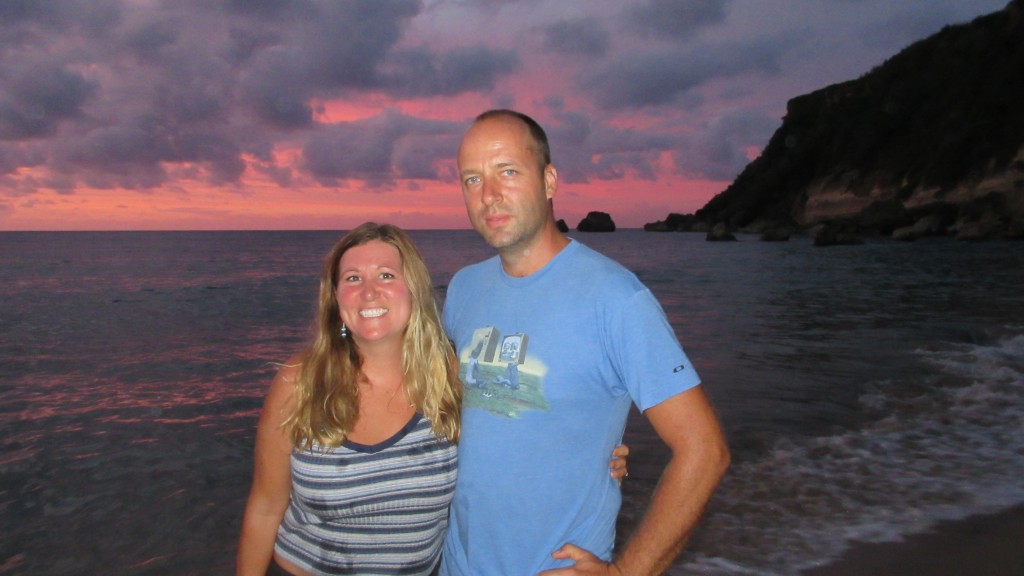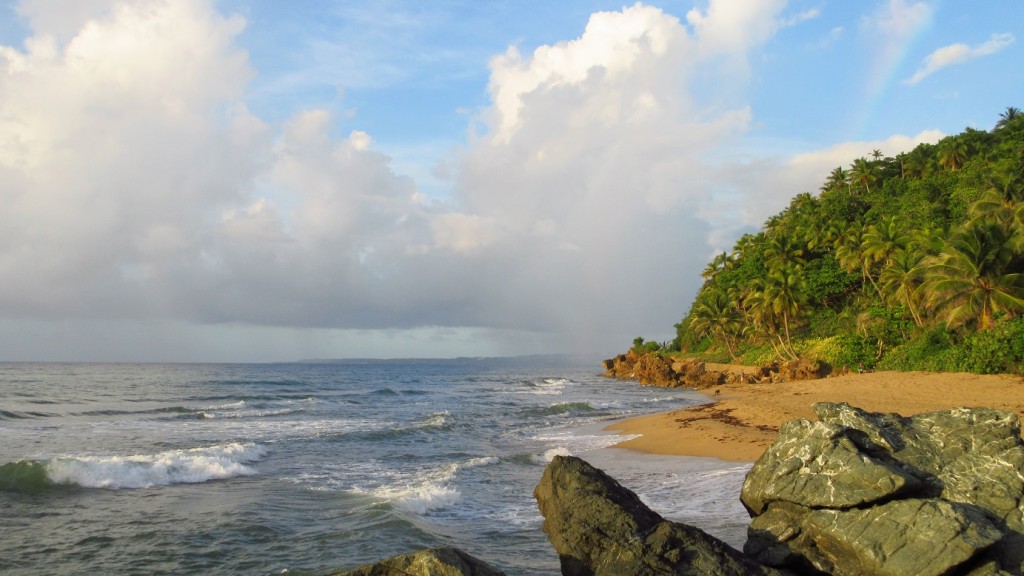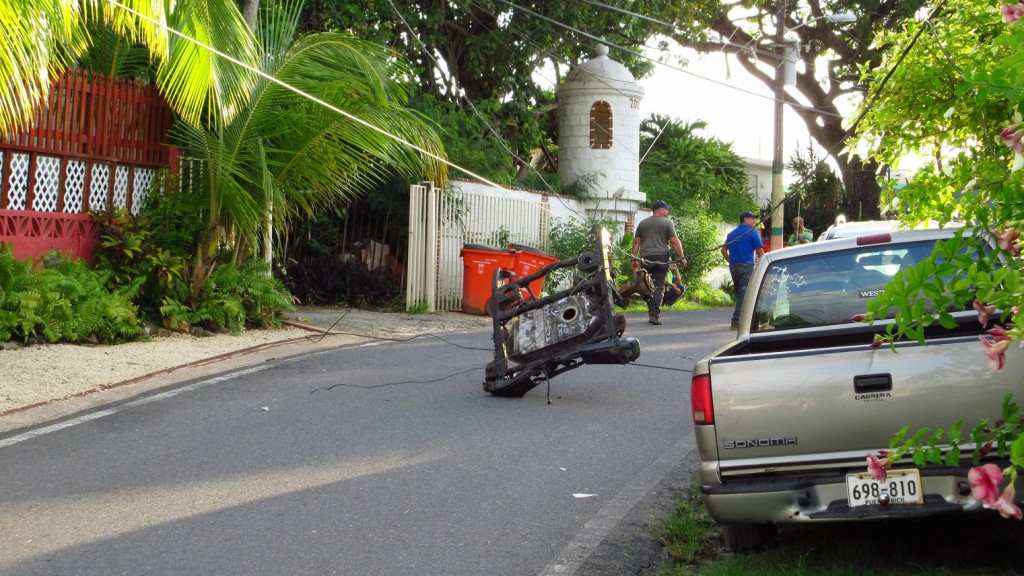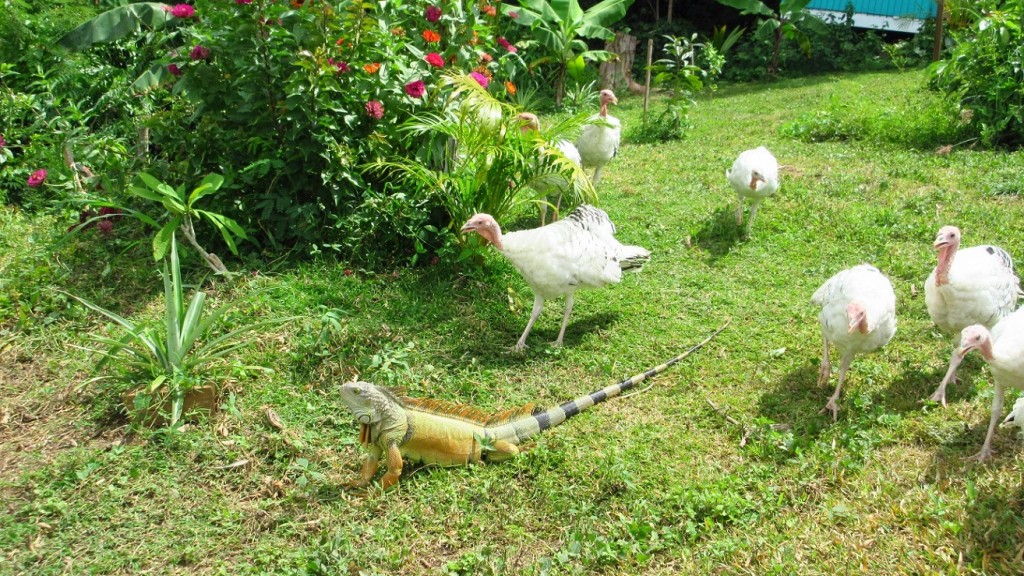Whew….Where to start?? So I had my birthday the other day….
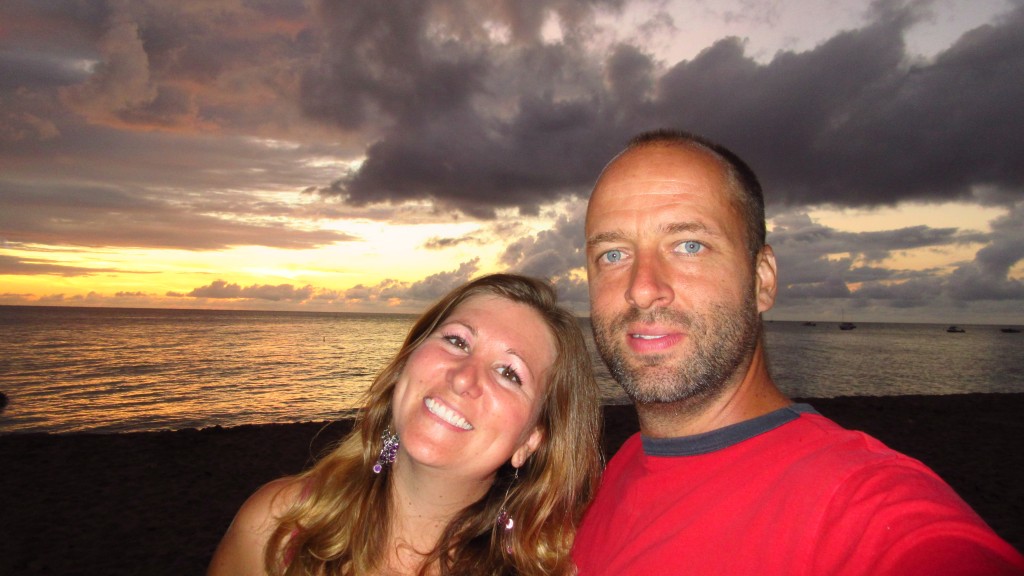
It was great! We went out to dinner and watched a beach sunset
A few days later Cassie looked at my Colorado driver’s license and noticed it had expired on my birthday. Bummer. I tried to renew it online with the Colorado DMV but since it had been 10 years (or longer) I couldn’t renew it with CO. So I started checking out other people’s blogs to see what the process was for obtaining my PR license. I found out that we probably should have done this soon after we moved here, but that it is rarely enforced, as long as you have a valid license somewhere. I read some comments and saw someone from Colorado simply had to take the medical exam and pay for stamps, show their SS card and turn in their CO license and was able to get their PR license. No tests, no old driving record or anything too difficult. Hmmm, hopefully this would be the case for me, I thought.
Cassie and I set out early (10am) for CESCO in Aguadilla. We always fill up our water jug, grab some portable food, take care of all the animals and double check we have all the documents we need, camera, wallet. We also stopped by the school supply store for copies of all my important documents and I picked up an English version of the Driver’s Permit Study Guide…just in case. Ok, we are all ready to go!
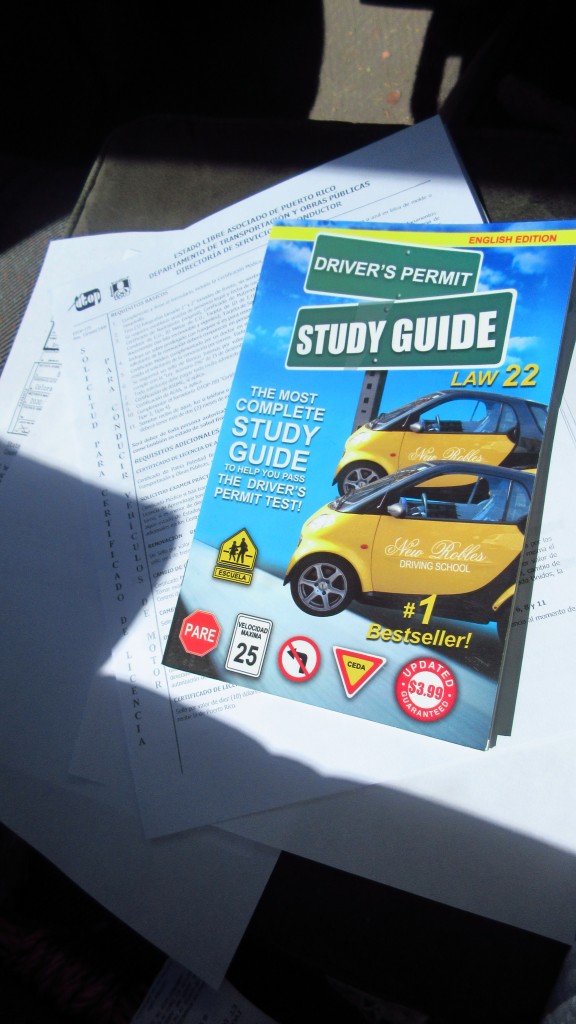
When we got to CESCO we stopped at their information desk, and this was probably the wisest thing we could have done. The lady at the front desk immediately noticed that my CO license was expired and told me that I would have to go through the ENTIRE process of getting a license. I thought MAYBE there would be a grace period, but nope. This meant I had to do the whole thing as if I were a brand new driver: starting with the learner’s permit and all the steps from there. Had I been there a week earlier when my license was not expired I would have only needed stamps, my social security card, proof of residency (water or electric bill with our address) and a medical exam. The medical exam and sellos are sold next door to CESCO and cost $28. The “medical exam” was basically to just look at an eye chart and point your fingers up and down based on which direction the E pointed.
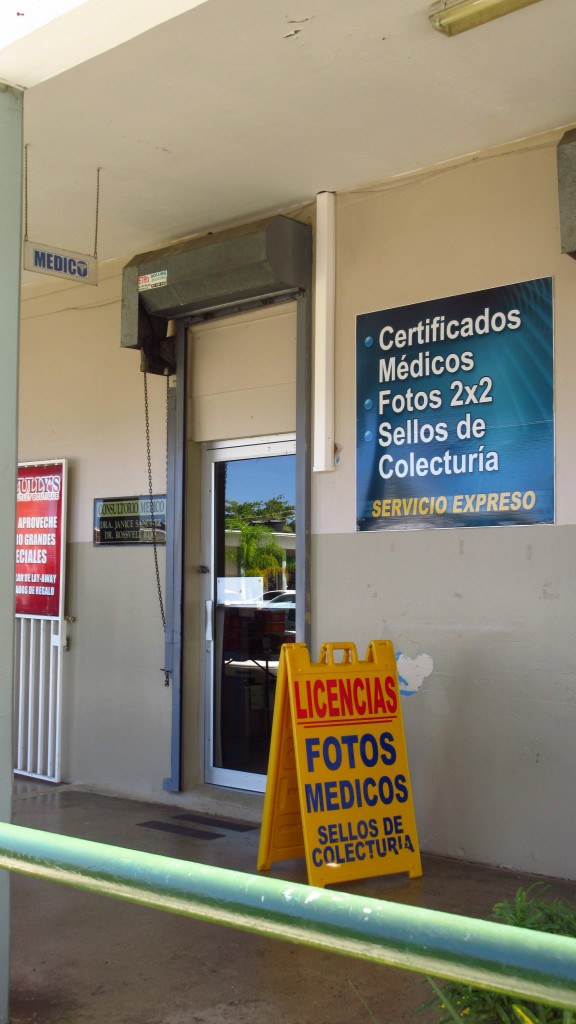
“Medical exams” for sale here
So this is where the adventure begins!!
We often compare living in PR to video games. It can be a challenge sometimes or a cakewalk. There are interesting characters we meet along the way, some have valuable information and some do not. Some of the adventures we embark on have side quests as well. They vary and you just never know what route your path will take. The PR drivers’ license episode had a bit of everything that makes for a great adventure.
It was a good thing I grabbed that learners’ permit study guide. Yep just in case. I have learned that phrase in Spanish: por si acaso. Just like the copies of anything important (SS card, passport, birth certificate, utility bill, etc). Although not all of these were needed. We had them…just in case. It comes in handy because yes, I had to get a learner’s permit before I could get my actual license. So it was back to being 15 years old.
It ended up that since I had to get my learner’s permit I had to take both the written and practical exam. Since we were already in Aguadilla I figured I might as well take the written exam. I studied for about 30 minutes (read from cover to cover) and then took the test. There were 4 other guys in there taking the test, all of them ~16yrs old. I was able to take the test in English which was a big help. I scored an 80%, not bad. They have some questions on the test that I didn’t really see the point of. It was mentioned in the other blogs to pay attention to the fines, and this was good advice. How much is the fine for parking in a handicapped spot? $500. How much for running a stop sign and potentially killing someone? $50.
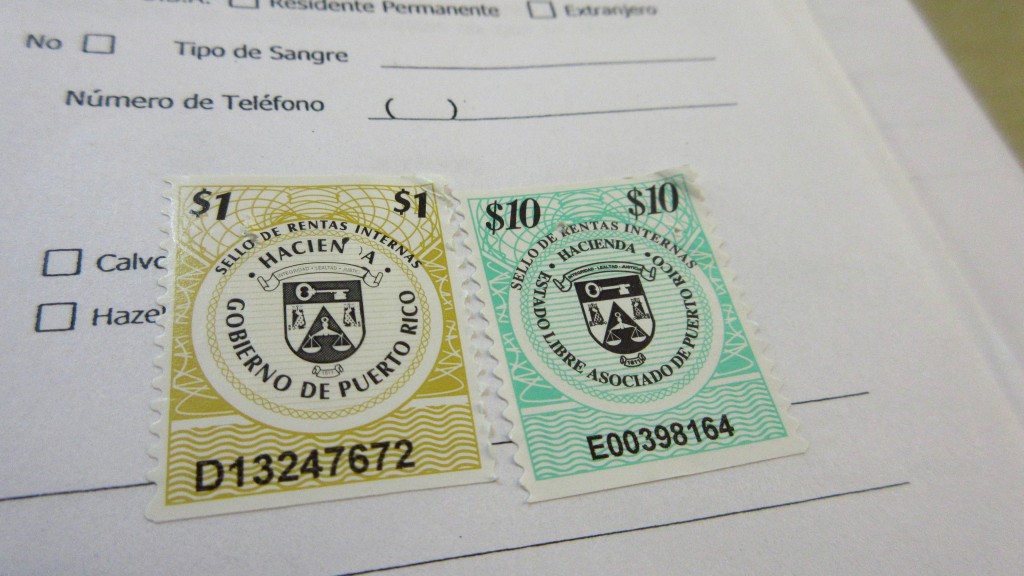
Government “Sellos” or stamps
So with my exam passed, my medical and my stamps I was able to get the learners permit! Everything went very smoothly and the lady at the front information desk was a HUGE HELP. She pushed papers thru faster, she ensured I had everything and put us in order and she was super friendly. Props to Ilene! You rock. The next problem was that usually you have to wait 30 days from getting your permit until you can take the driving test….You know, so that your 16-year-old self has a chance to practice driving with your parent… We talked to the lady in charge of scheduling the exams and convinced her that since I was an experienced driver that the 30 days was kind of silly. She got her supervisor’s approval (this was important as you will see) and got on the list to take the test the next day. As we were leaving we saw some of our friends whose car broke down and we gave them a lift in our truck. It was pretty funny for our first drive under a learner’s permit.
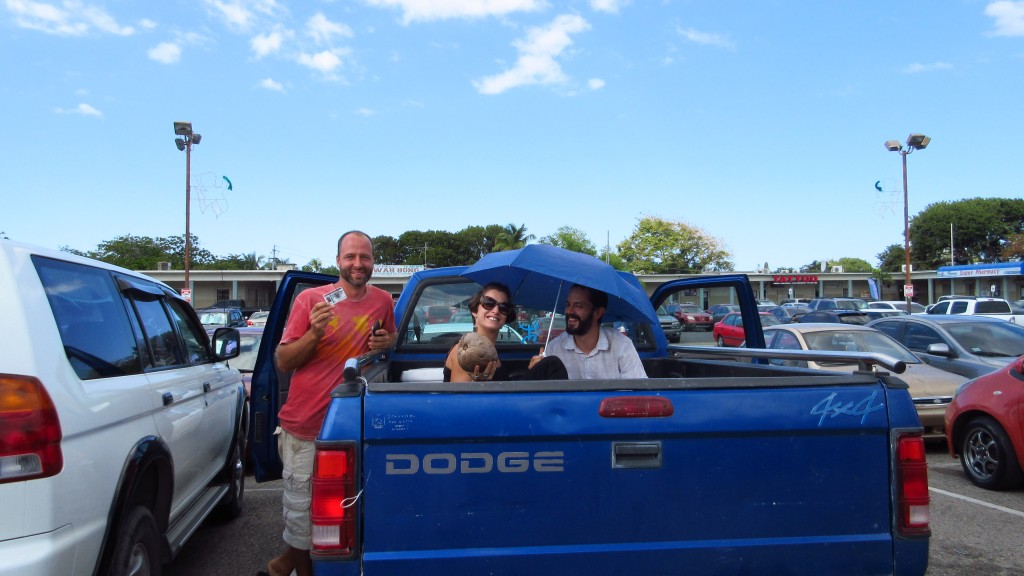
Just like I’m 16 again
Day 2:
Same deal. Get up, get ready, make sure we have everything, etc. We arrived in Aguadilla and found the exam location which is right across the street from the airport. It is just a shack with some people standing out front. This threw us for a loop because we figured it would have at least a sign out front. It doesn’t.
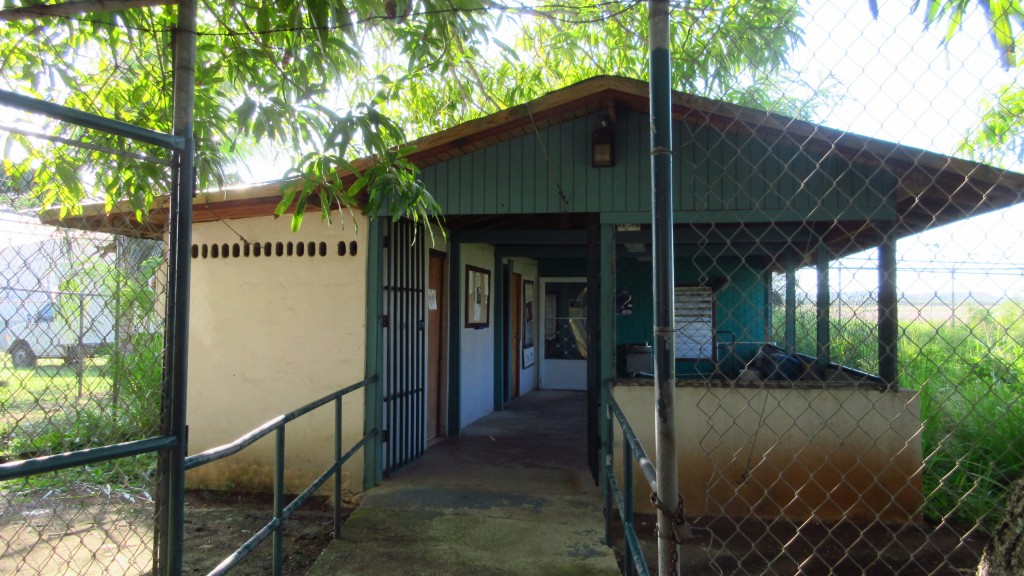
Practical Driver’s Test Building Area in Aguadilla
You can take the test in your own car, or you can hire a driving instructor to go through the test with you and let you practice with their car. Since the truck’s speedometer is inoperable we figured that we should use their car to avoid any possibility of problems.
I drove with the instructor for 20 minutes and she was very nice but humorously strict and controlling. She would tell me to drive up, stop. Put the car in reverse pull back till the sticker on the window is next to the 2nd cone, stop then turn the wheel and then go back, stop, then turn the wheel again, then go then stop. She was trying to speak with me in broken English, Cassie was trying to interpret and I was just trying to follow her commands. We had the most frustrating time trying to work with each other and then I looked at her and said “so…you mean parallel park here?” She replied “Yes.” Ok, then it was easy. Trying to figure out what she expected me to do was the most difficult part of my lesson…lol. Then the instructor told Cassie to get in the front seat and told Cassie to kiss me for good luck on my test while the lady took a picture as a “recuerdo.” It was pretty funny.
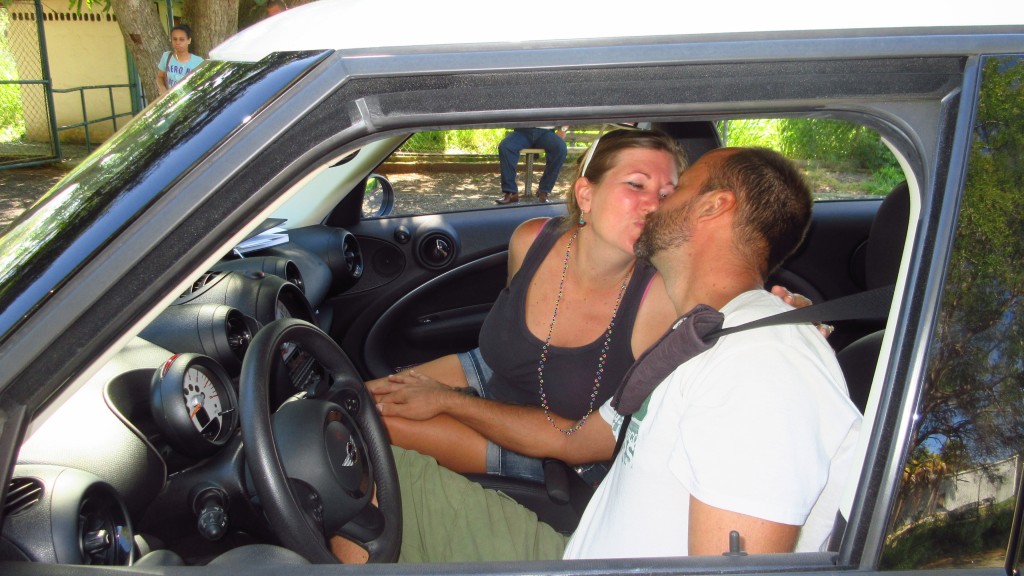
Good luck to me!
Once I was done with the lesson and had my good luck kiss, it was time to take the test. The examiner hopped in, we drove around the block and then he had me park the car. I thought “Oh man, that was a cinch!”. Maybe he was letting me off easy because I am a long time driver? Either way, that was easy. He got out and started to converse with Cassie and the Instructor in Spanish. My Spanish is getting better, but not very good. All I could make out was that he kept saying “Treinta dias”. He was getting pretty angry and everyone was having heated conversations. I knew this wasn’t good.
As it turns out he was saying that I only had my permit for 1 day and he wasn’t going to allow me to take the test. We explained that we had special permission to do it, hence the appointment and form we took with us. He was refusing. Simply refusing to budge. I was thinking we would have to do this all again in a month. That would suck.
The instructor lady who did my driver’s ed kept trying and trying. She at one point told Cassie that we should probably leave and that things were not looking good and that we didn’t want to create enemies. I just kept saying we would do whatever was needed to show that we had approval to do this today, we could get whatever form he needed and we weren’t trying to cause problems. Finally we got ahold of the supervisor on the instructor’s phone (I think that was what happened?) and she of course said it was fine. So I was a little shaken up and nervous to drive with the examiner who was clearly not happy, but I took the test and passed! Phew! We paid the instructor lady the $40 and were off to finally get my real license.
We went back to CESCO and the woman at the front desk recognized us and put our papers first in line. We got the license! I am officially a Puerto Rican Driver! To top it all off, as I was walking back to the truck I found $2 in the CESCO parking lot. We then went to Crashboat and talked about how crazy this all was. I figured that was bonus points in the game for accomplishing the task.
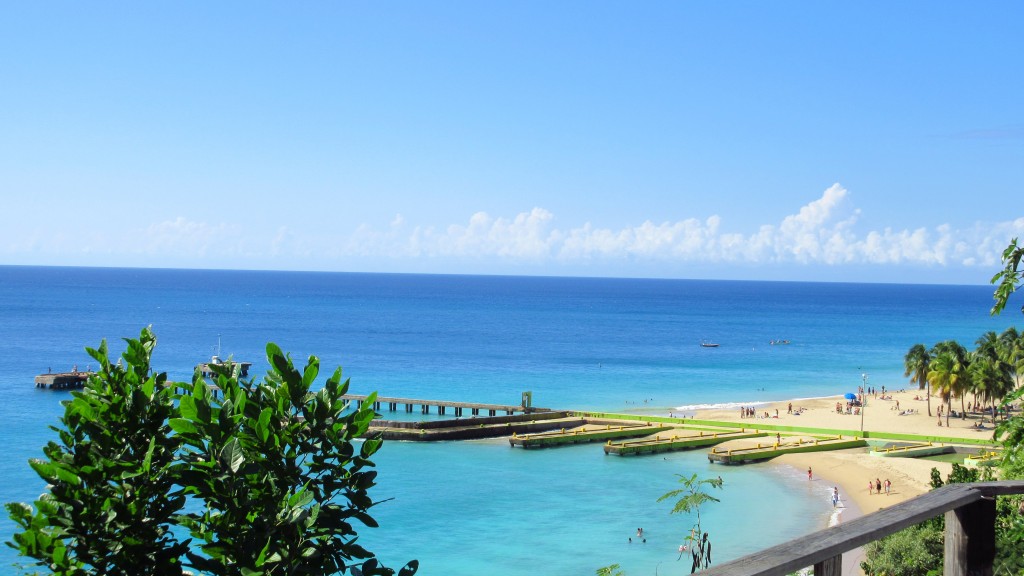
Crashboat Beach in Aguadilla
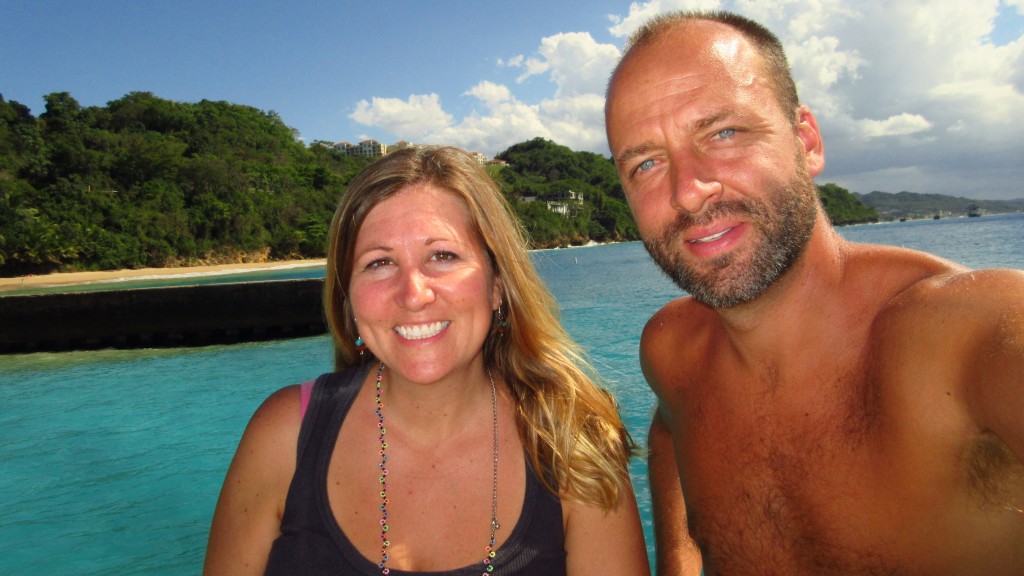
The beach: somehow both the beginning and end of this story
Read this for Cassie’s PR license experience.

